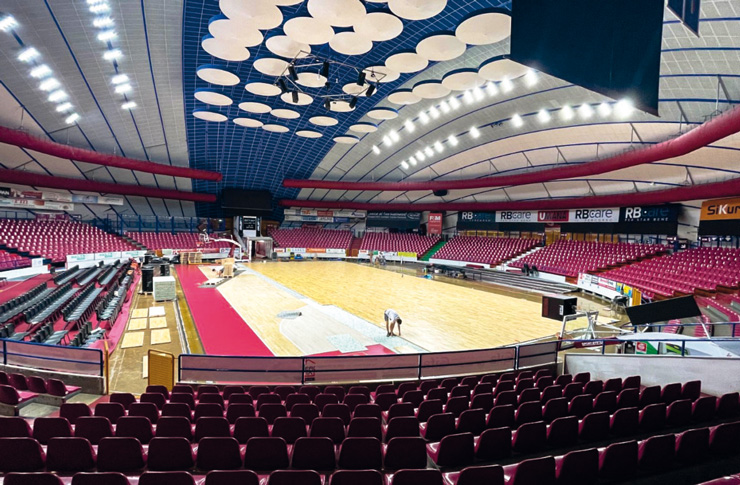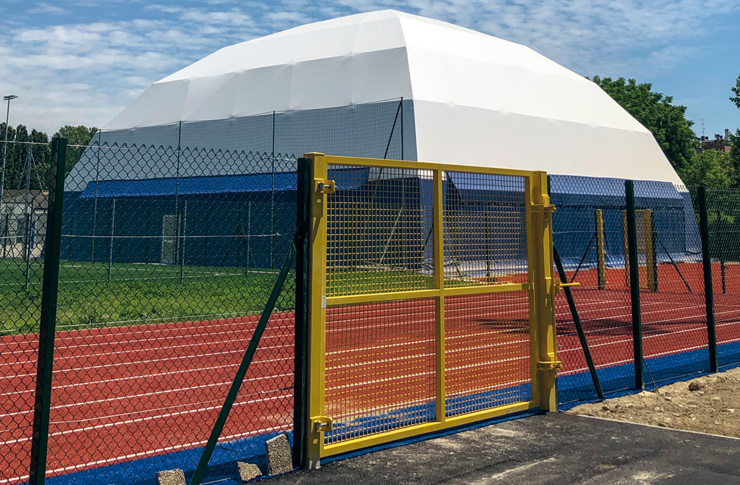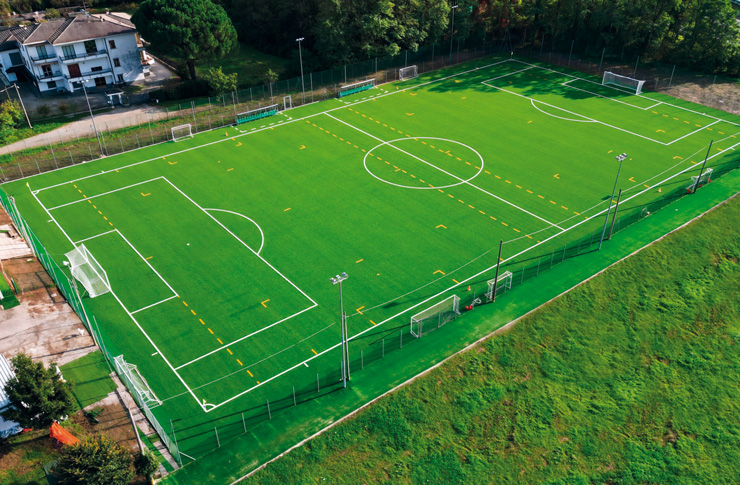Special #33: Athletics surfaces – The world event as an opportunity for the city to equip itself with sports facilities that will remain as a legacy through urban regeneration.
The National Athletics Centre in Budapest
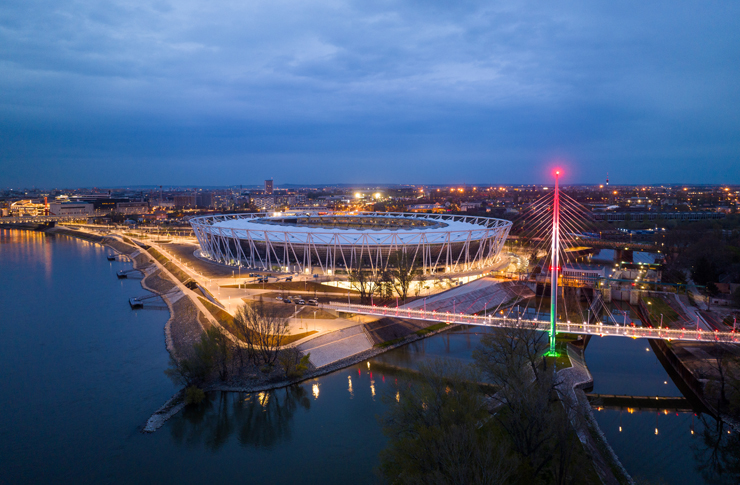
(Ph. Gyorgy Palko).

The 19th World Athletics Championships will take place in Budapest, Hungary, from 19 to 27 August.
The city of Budapest, the only successful candidate, was selected on 4 December 2018 in Munich. After Doha 2019 and Oregon 2022, the World Athletics Outdoor Championships return to Europe six years after London 2017. The Hungarian capital hosted the European Athletics Championships in 1998.
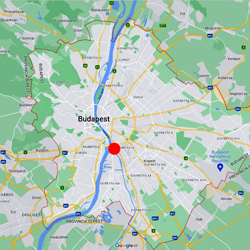
The Championships will be hosted in the brand new National Athletics Centre. The centre is built on the eastern bank of the Danube River in the southern part of the city. Until yesterday a brownfield site, the site and the entire area are being redeveloped to become a public park with many green spaces, open to all.
The peculiarity of the new facility, in terms of its validity once the event is over, is the plan to reduce its initial capacity from 35,000 seats to 15,000, removing the upper tiers of seats and leaving a circular plateau free at the top, which will be used to accommodate facilities, pathways, and various services available to the public.
Below is an illustration of the project by architect Marcel Ferencz.
The Crown of the Queen of Sports
The Athletics Centre and its ancillary project elements – collectively known as the National Athletics Centre – have been built on behalf of KKBK/NKK/BMSK/ÉKM, according to the medium- and long-term urban architectural design-guiding concept of the Budapest Southern City Gate development initiated by the client, and have been designed by the competition-winning architectural firm NAPUR Architect Ltd.. and executed by the ZÁÉV Zrt. – Magyar Építő Zrt. construction consortium.
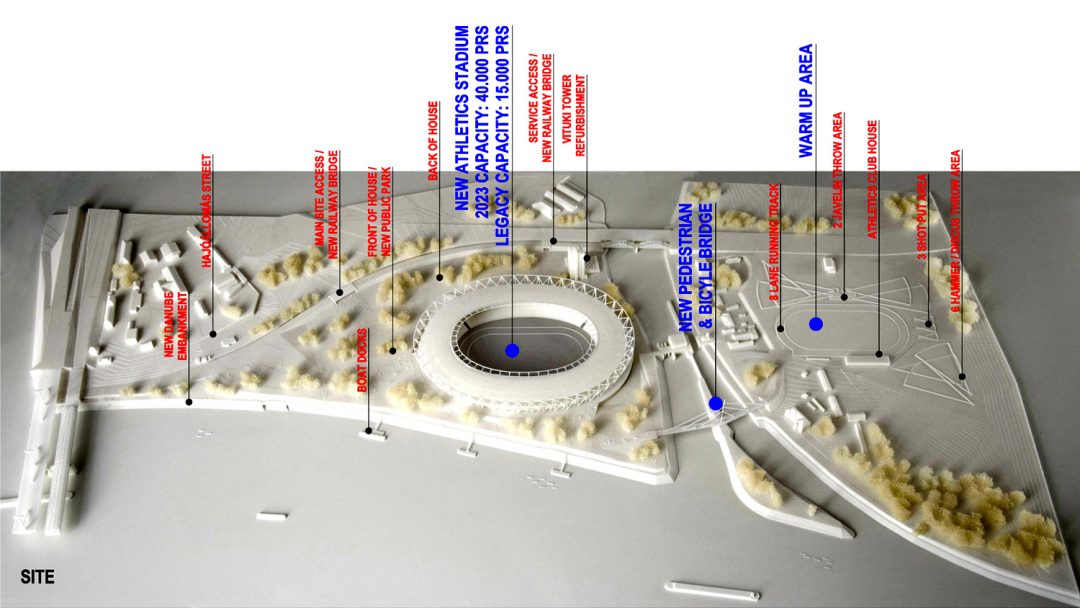
The main elements of the design are the new Athletics Stadium and Park realized on the premises of the former Vituki industrial estate in Ferencváros; the newly planned pedestrian-and bicycle cable bridge that will connect the northern tip of Csepel Island; and the new Athletics Training Centre accessible through this new bridge. Altogether, these three project elements will provide an urban vision for the development of the area.
Urban planning
The project will entail the rehabilitation of an industrial area: the Vituki site and its surrounding Danube riverside area. Furthermore, it will give a new open public sports and recreation park to the capital. The Athletics Stadium building has been built in the centre of the park. On weekdays, a covered and floodlit running track, roller-skating track, streetworkout, training area and streetfood service will be available for sports fans on the place of the temporary upper grandstands in the building’s basic mode.
In the development area surrounded by the Rákóczi Bridge, the Kvassay Barrage, the new cable bridge and North Csepel new flood-protection barrier as well as riverside pedestrian walkways, cycle lanes and boat stations will be built.
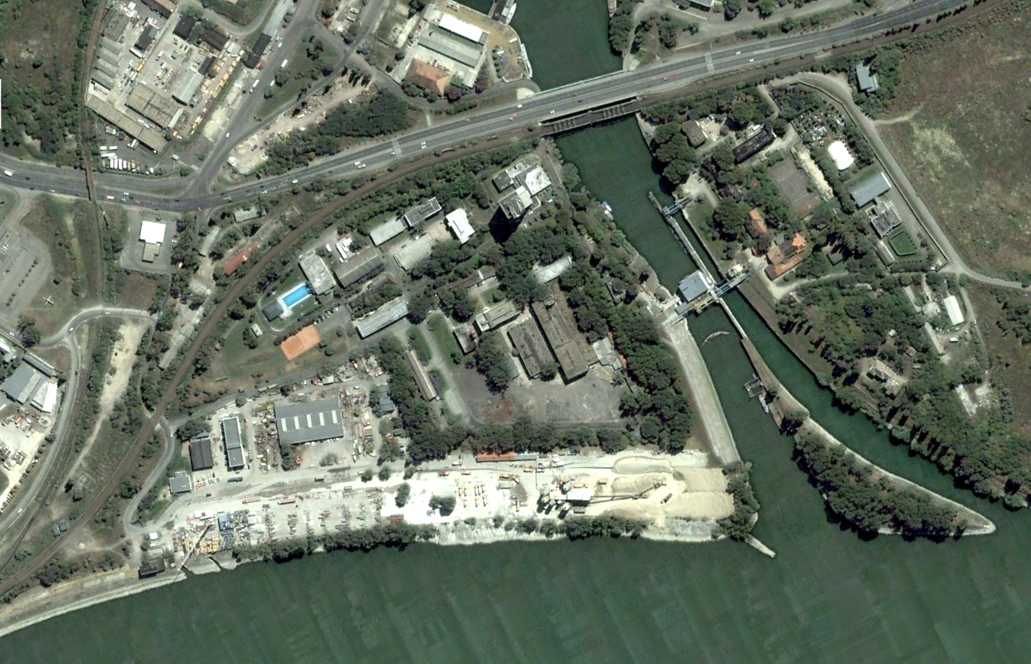
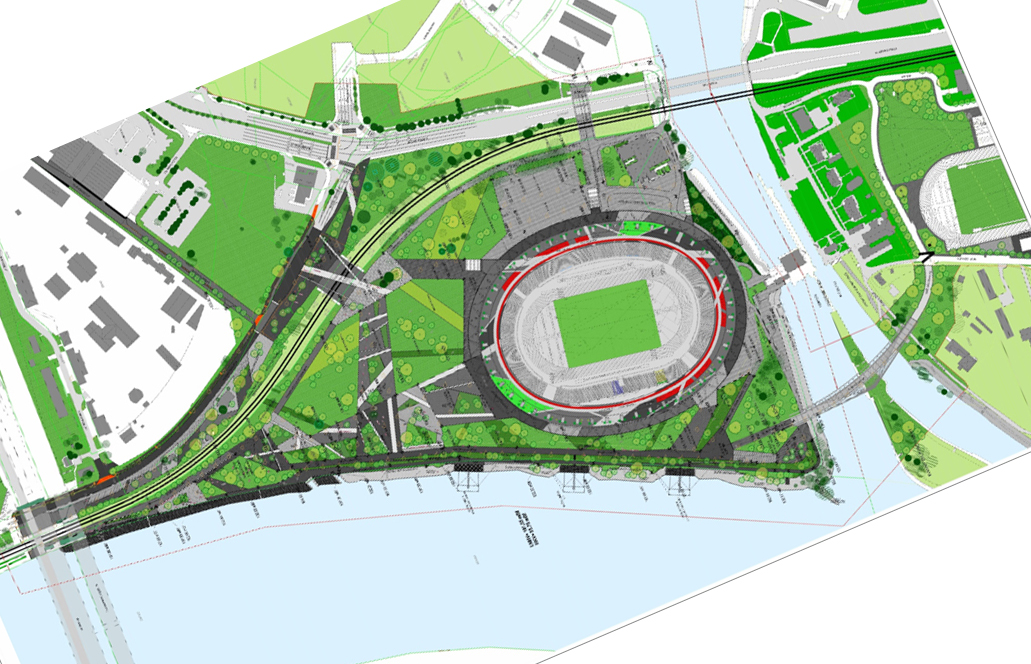
The development will provide pedestrian, cycling and waterway connections to the entire northern and southern areas of the Pest-side embankment, all the way to Csepel Island. By modifying the urban development plans concerning the current planning area, the decisive image of the urban landscape seen from the Danube corridor has become cleaner. The former industrial functions and the previously proposed high-rise residential and office buildings have been substituted with low-rise sports and recreational functions.
It was imperative for this development to connect to the outstanding natural assets of this exceptional area in a respectable manner. The aim was to create an attractive urban area for the city inhabitants, on the border of the EU’s and Hungary’s ecological network along the Danube.
Altogether the overall planning area that was meant to be rehabilitated consisted of three main land units. The first land unit was the area of the National Athletics Centre and Park – this is a 15 hectares area enclosed by the brownfield industrial estate of the Vituki site, the Lágymányosi Bridge, the Great Danube Branch, the Kvassay Barrage and the H7 HÉV line. The second land unit was the area of the Athletic Training Centre – this is a 5 hectares area between the KDVVIZIG monumental Tisztviselőtelep and the Wastewater Treatment Plant in North Csepel, and between the “Nagy-Duna sor” road and the H7 HÉV line. The third land unit was Hajóállomás Street and its surroundings – this is a 3 hectares access area delimited by the H7 HÉV line, the Lágymányosi Bridge, the Soroksári Road, the Kvassay Road, an area that was crucial for the integration of the project into the urban structure.
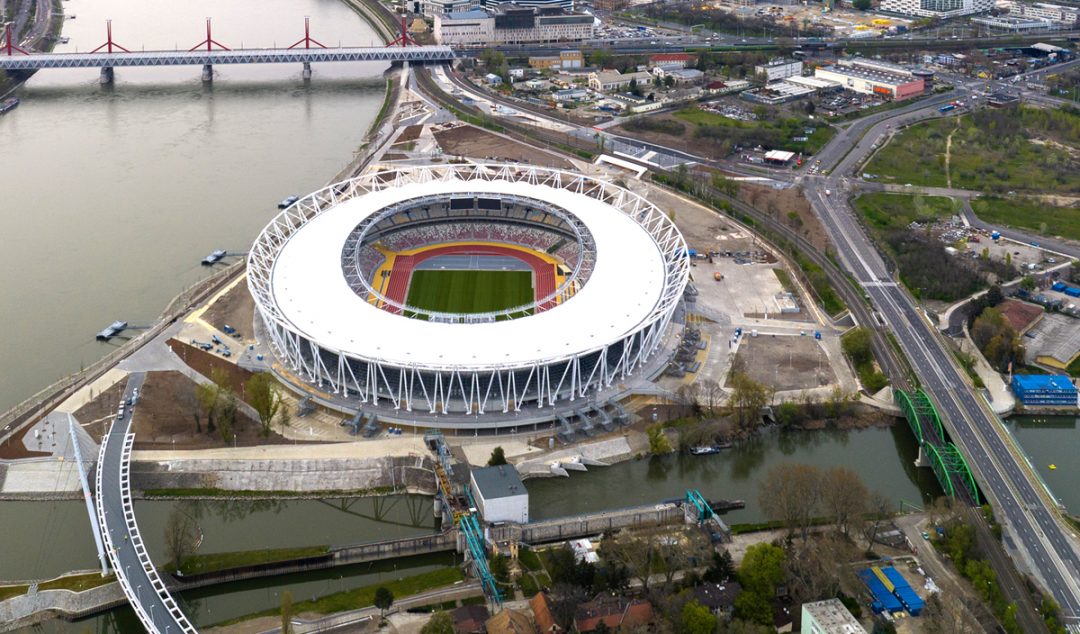
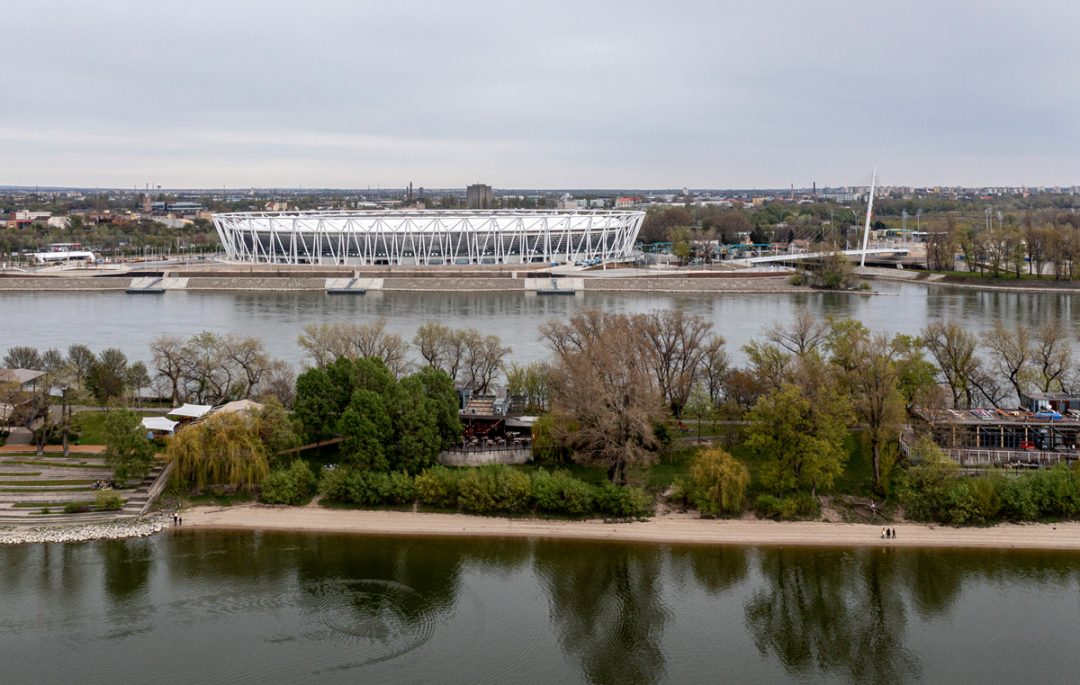
To access the area of the National Athletics Centre and Park two new routes have been built and one has been rebuilt. Of the two new underpasses completed under the existing H7 HÉV railway embankment, the first one is used as the main public access at the axis of the Hajóállomás Street, while the second one south of the site is used by the stadium operations and logistics. The third entrance to the site could be an extension of the Gizella Promenade under the Lágymányosi Bridge, in conjunction with the reconstruction of the South Pest railway bridge and its Pest side in the MÜPA direction.
In all three areas, the entire utility and road network, as well as traffic management and landscaping elements, were renewed in the vicinity of the planned and existing transport structures up to the Lágymányosi Bridge, Soroksári Road and Kvassay Road.
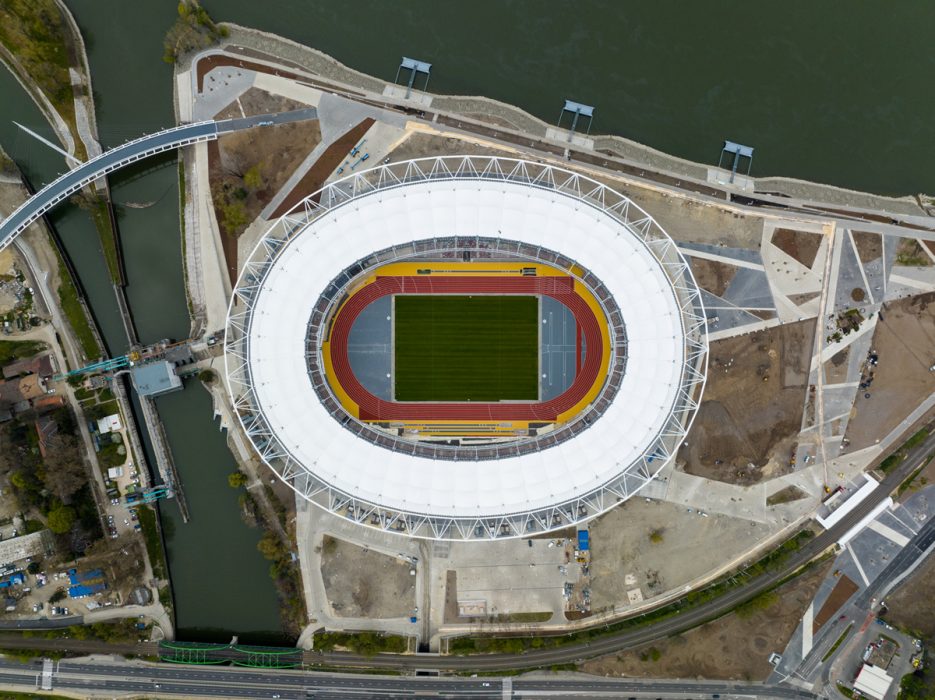
The National Athletics Centre
The two main venues for the World Championships, namely the new Athletics Centre building, which will be able to accommodate 40,000 people, and the new outdoor Athletics Training Centre with its running tracks and throwing fields in North Csepel, were built in accordance with the functional specifications and event management recommendations of the Hungarian Athletics Association (MASZ) and the World Athletics (WA), under the coordination of the Ministry of Construction and Transport and the professional guidance of the Budapest 2023 Atlétikai Világbajnokság Szervező Nonprofit Zrt.
The steel structure of the stadium has been designed by NAPUR Architect Ltd.., while the roofing of the stadium using tensioned cable structures, unique in Hungary, has been designed under the direction of Exon 2000 Ltd. with the assistance of experts from the UK engineering firm Buro Happold to be able to serve up to 40,000 spectators
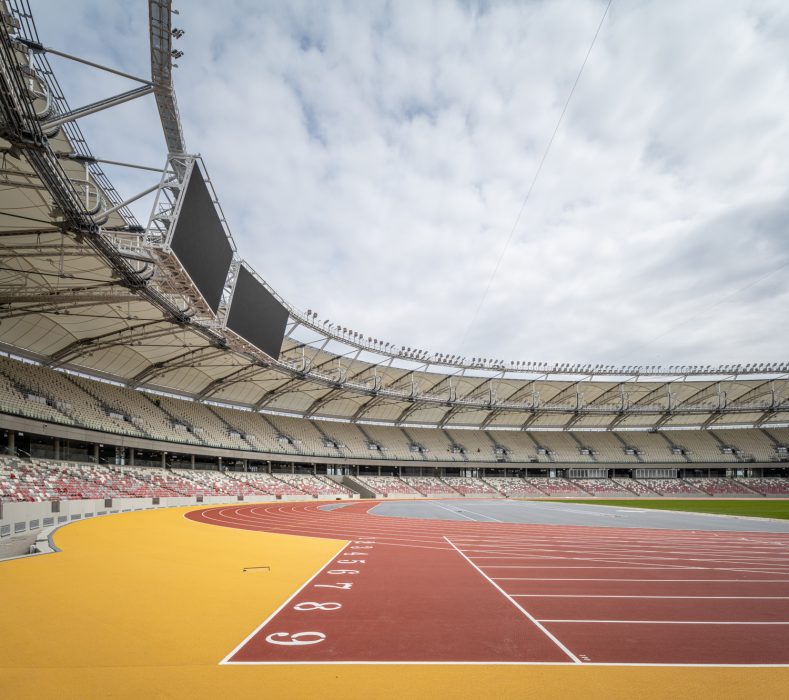
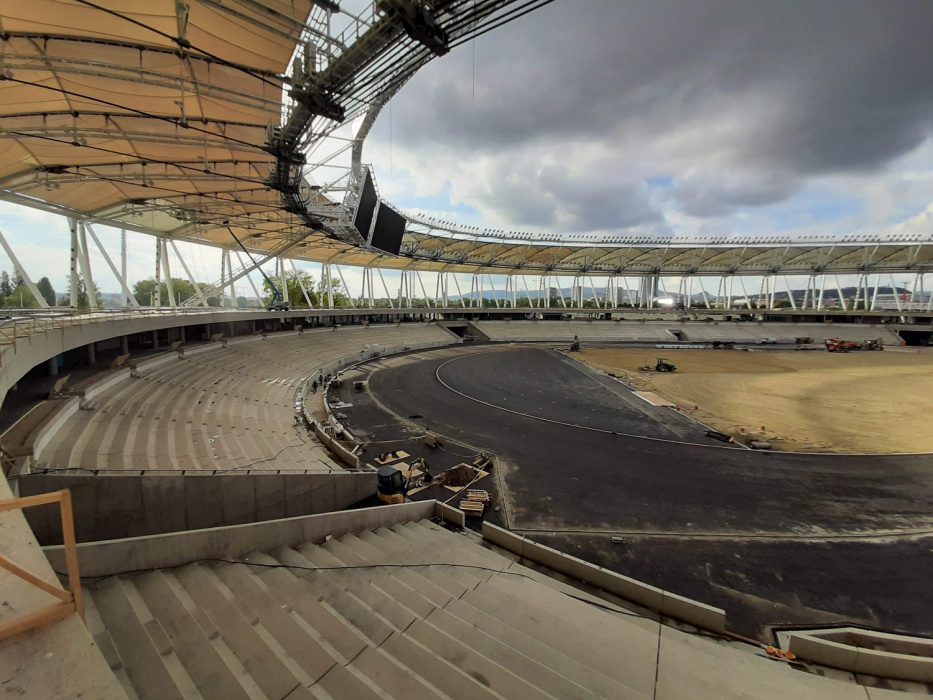
The roof structure of the fully covered stadium will remain in place for the long term in both competition mode and basic operation, which means that the building’s complete floodlight, sport lighting, sound and scoreboard systems will be left in place. By keeping the roof structure, it will be possible to periodically host the returning major international tournaments, with the possibility of re-expanding the stadium using rentable grandstands. Contrary to international practice the new Athletics Centre has been designed to accommodate different number of spectators depending on the basic operation or competition events. In basic operation the building is designed to offer 15,000 seats on the lower fix grandstand which can be extended by a rentable temporary upper grandstand offering an extra 25,000 seats for competitions. These temporary structures will be disassembled after the event and the vacated floor space will be given over to the mass sports associated with the basic open arena mode.
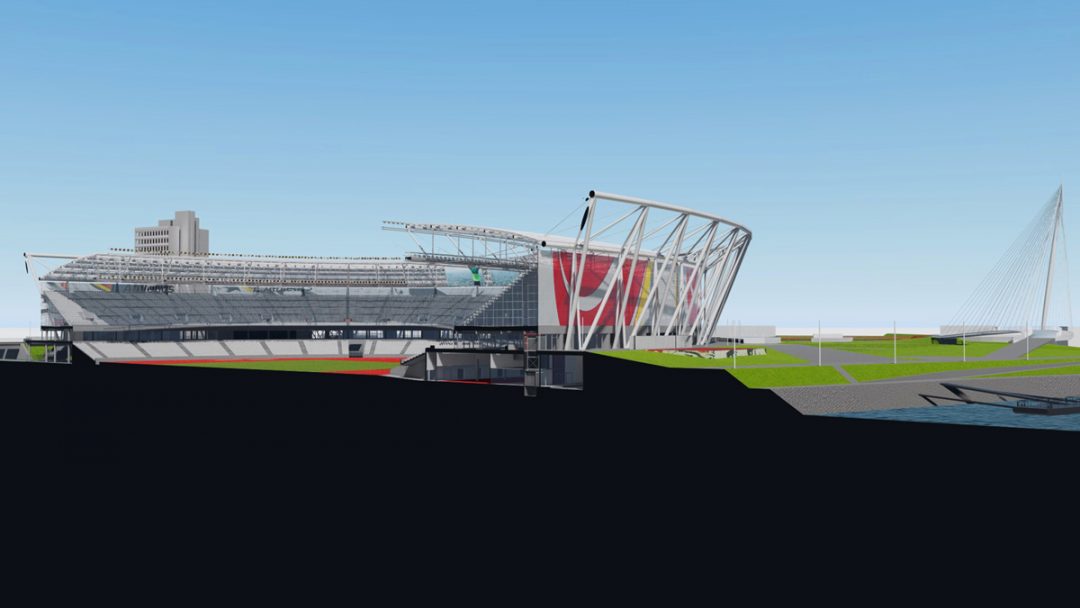
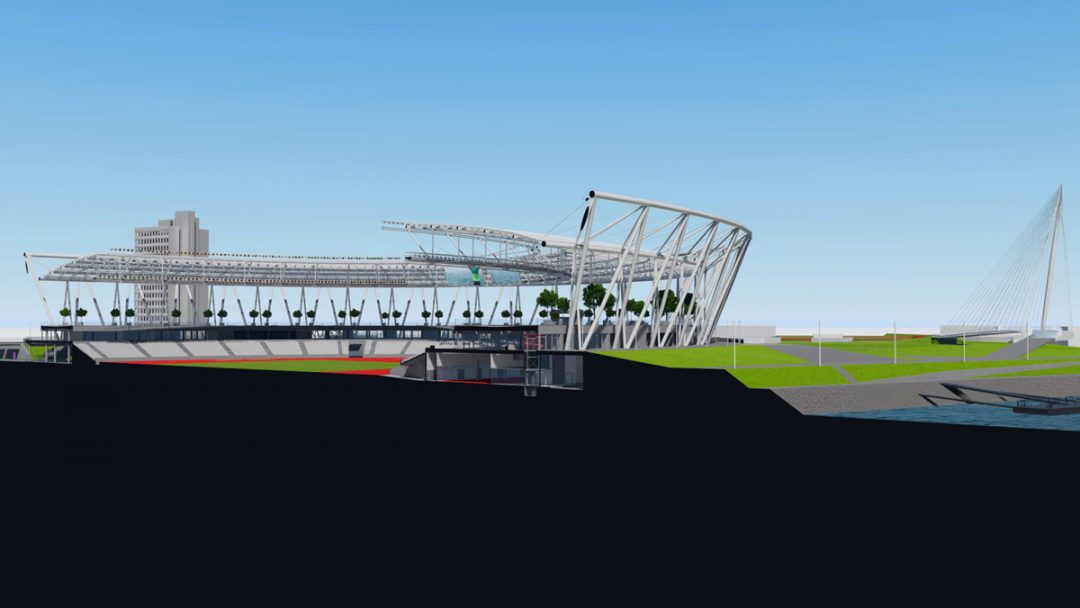
The semi-enclosed roof structure will be unique in the world with its spectacle new feature, the urban pergola, while the open Sports Ring underneath will serve as an urban public space that is open to the public in the heart of Budapest, on the Danube riverbank.
Altogether, the National Athletics Centre built for the 2023 World Athletics Championships serves as a new international sporting and cultural centre on the exceptional site of the Danube that supports urban recreation, leisure sports and national youth sport.
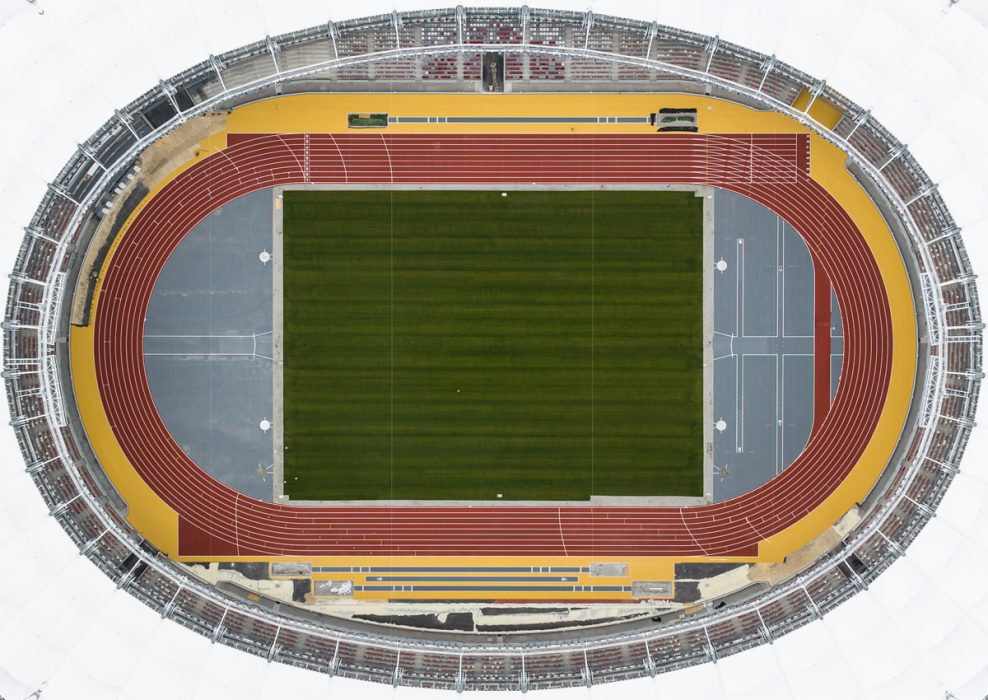
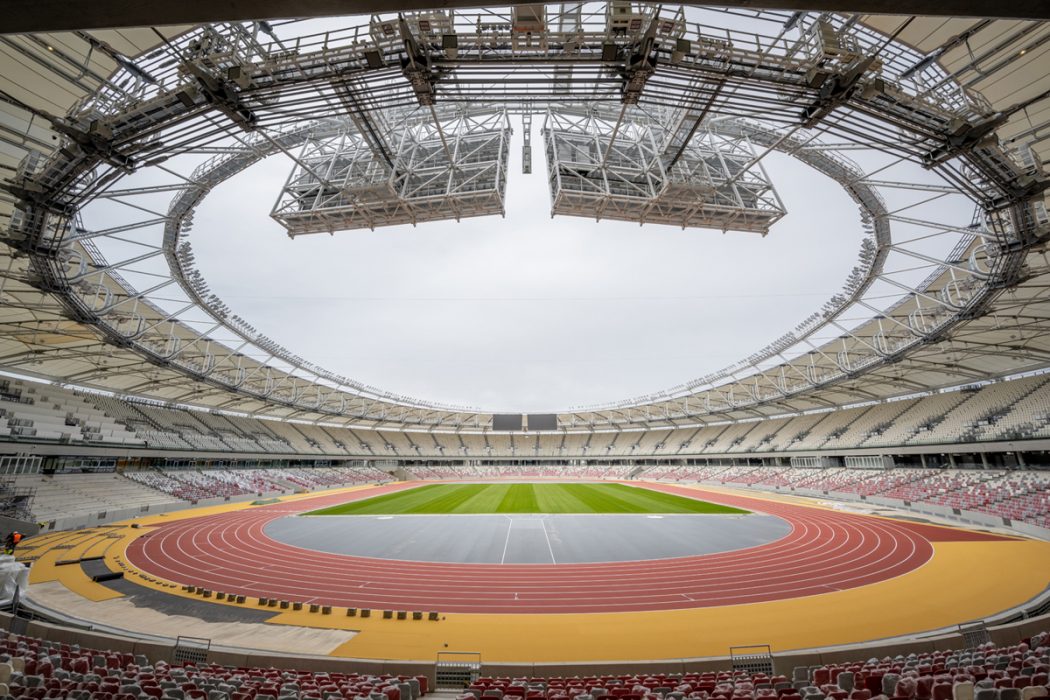
Ferencz Marcel DLA Architect





